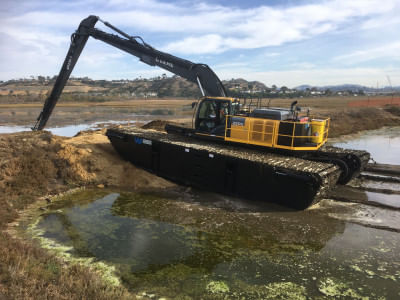
Benefits of Dredging & Its Impact on the Environment
Dredging, the process of removing sediments and debris from the bottom of lakes, rivers, harbors, and other water bodies, has been a cornerstone of maritime development for centuries.
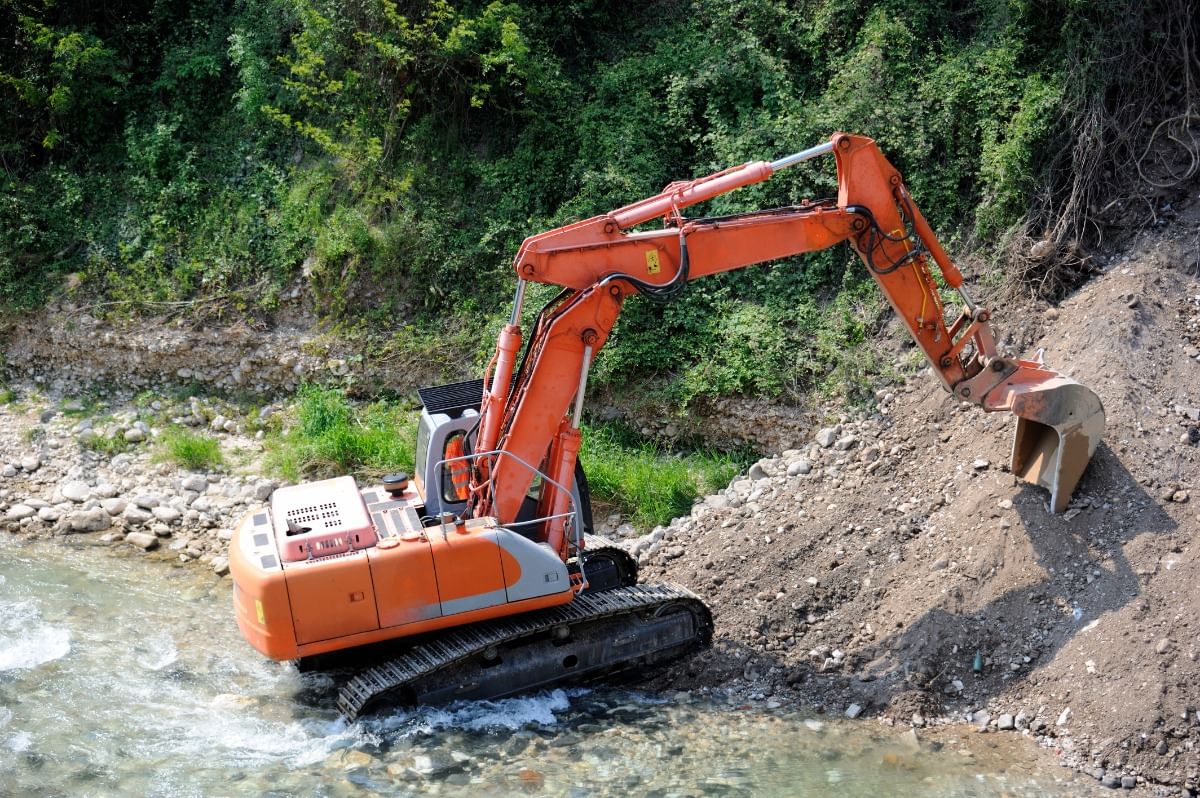
Getting reliable production in swamps, marshes, and soft shoreline soils requires machines built for buoyancy, traction, and stability. Bobcat mini amphibious excavators answer that challenge by pairing compact excavator agility with a purpose-built amphibious undercarriage, which allows operators to float, wade, or traverse saturated ground while staying in control. Wetland Equipment outfits select Bobcat mini excavators with engineered pontoons and track systems that turn messy sites into manageable jobs.
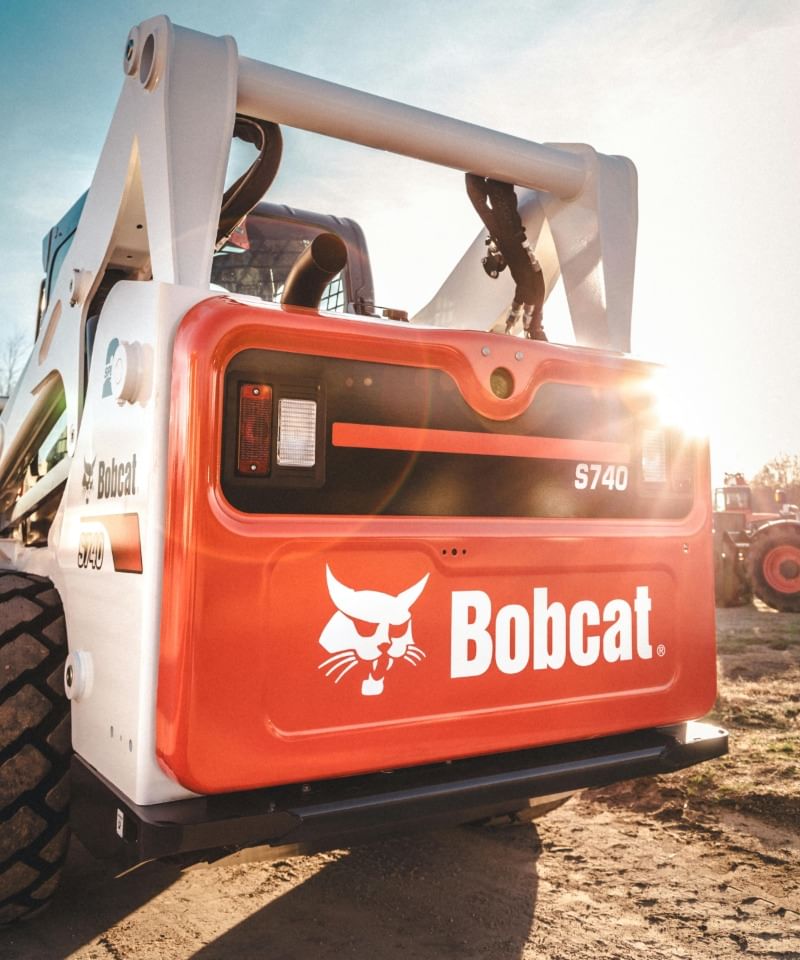
A mini amphibious excavator moves where traditional tracked machines bog down, because the hulls are sealed, the flotation volume is generous, and the tracks are sized for grip rather than speed alone. The pontoons serve as both buoyancy chambers and structural beams, while reinforced track frames keep alignment true through ruts, roots, and submerged debris.
Key Bobcat excavator advantages include:

Teams choose mini amphibious units when access is limited, budgets are tight, and deadlines cannot slip. Typical use cases include:
Successful builds start with the right pairing of machine weight, auxiliary hydraulics, and intended workload. Wetland Equipment supports select Bobcat mini excavator classes, generally in the compact range where operating weights and auxiliary flows align well with amphibious undercarriage geometry. Fitment depends on model, counterweight configuration, stick length, and attachment plans, which is why our team confirms the specifics before recommending a platform.
Proper matchups protect performance and safety. Operators gain the stability they expect, attachments run at the flow they require, and the machine keeps its freeboard margin even under dynamic loads. Project goals guide the recommendation, whether the priority is light dredging with a pump or precise ditch shaping with a grading bucket.
A compact amphibious platform becomes a high-value site tool when you rotate attachments to fit the day’s tasks. Popular options include:
Moving a mini amphibious unit should be as straightforward as moving a standard compact excavator. Wetland Equipment designs Bobcat excavator undercarriages with transport in mind, including lashing points, balanced lift options, and clear width targets. Many customers trailer the machine with common heavy-duty pickups and gooseneck setups, subject to local rules and proper weight ratings.
A simplified mobilization flow looks like this:
1) Inspect the site and confirm water depth, soil type, and approach paths.
2) Verify attachment setup and hydraulic flow settings before loading.
3) Secure at designated tie points, then trailer to the site under permitted routes.
4) Unload onto stable ground, perform a brief float and track function test, and begin work.
Operator training focuses on situational awareness, water dynamics, and proper spud use. Crews learn how to maintain freeboard, how to side-load safely on banks, and how to execute controlled turns without scouring. Environmental stewardship improves when ground pressure drops, which helps owners meet permit conditions and reduce post-job remediation.
Good practice includes:
Contractors approach amphibious gear with varied timelines, which is why Wetland Equipment offers multiple paths. Some teams purchase an undercarriage and mount their Bobcat mini excavator for full-time marsh work. Other teams prefer a turnkey unit with attachments included, because immediate project revenue justifies a simple start. Flexible acquisition makes amphibious capability attainable without stretching crews or capital thin.
A clean machine lasts longer, runs quieter, and behaves predictably, especially in water. Maintenance on a mini amphibious excavator centers on wear surfaces, seals, and track tension, which are easy to access on Wetland Equipment builds.
Routine tasks include:
Profit on wet jobs depends on access, positioning speed, and cycle stability. Mini amphibious excavators reduce matting, shorten mobilization, and limit soil repair, which lowers cost per linear foot on ditching and shoreline work. Fewer stuck recoveries and fewer weather delays translate into steadier schedules and happier clients.
Wetland Equipment specializes in amphibious solutions rather than treating them as an add-on, which means every weld, seal, and wear surface reflects hands-on marsh experience. Teams trust our designs because they hold up under grit, current, and repeated loading, and because our support does not end at delivery. Confidence grows when operators see that the machine floats true, tracks straight, and responds predictably to controls.
Projects on water and saturated ground do not need to be unpredictable. Wetland Equipment helps you turn select Bobcat mini amphibious excavators into dependable amphibious tools that access tight sites, protect sensitive soils, and keep production moving. Reach out today for a sizing review, an attachment plan, and a clear quote!

Learn more about Amphibious Excavators in Wetland Equipment Company's blog.

Dredging, the process of removing sediments and debris from the bottom of lakes, rivers, harbors, and other water bodies, has been a cornerstone of maritime development for centuries.
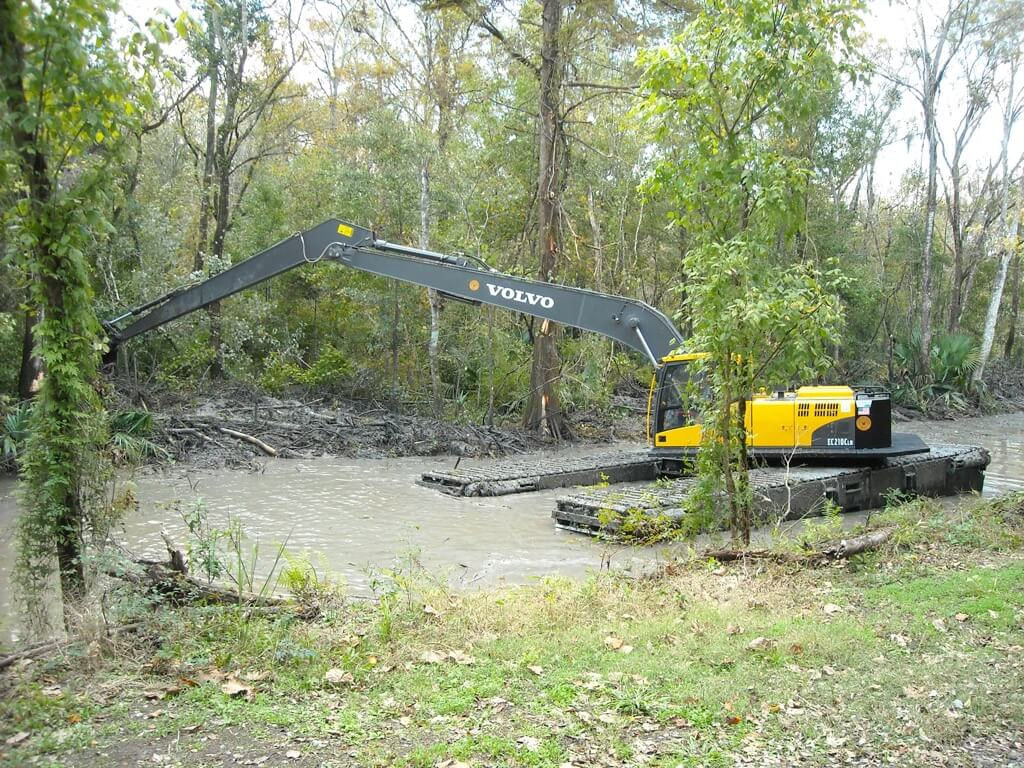
Are you seeking an equipment upgrade to manage challenging terrains with superior efficiency and control? Take a look at amphibious excavators!
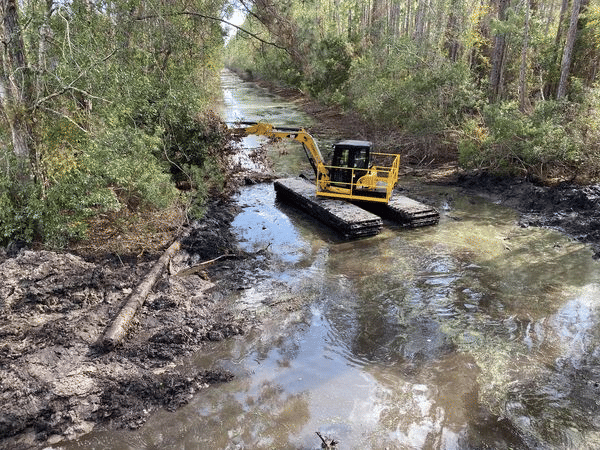
A swamp excavator, also known as an amphibious excavator, pontoon excavator, or floating excavator, is a type of digging machine that can perform dredging and similar tasks while remaining afloat in swampy terrain that would normally be inaccessible to traditional excavation machines.
Showing 7 to 9 of 56 results